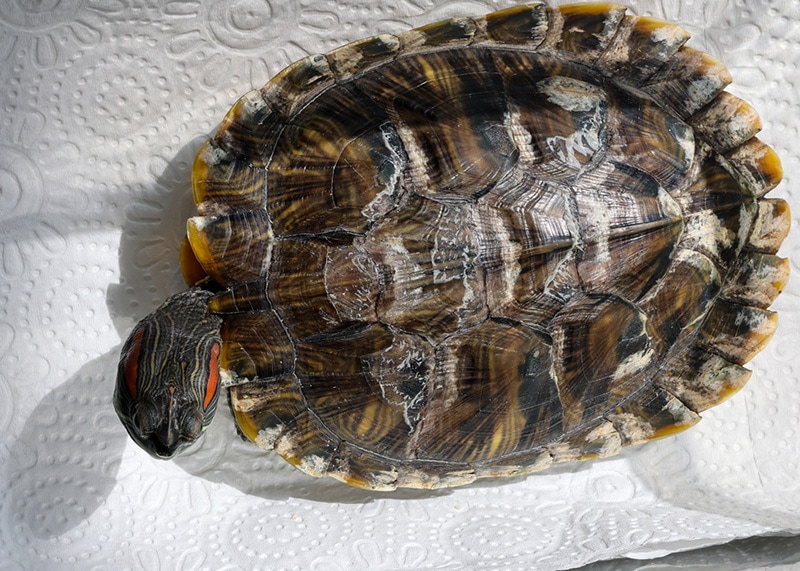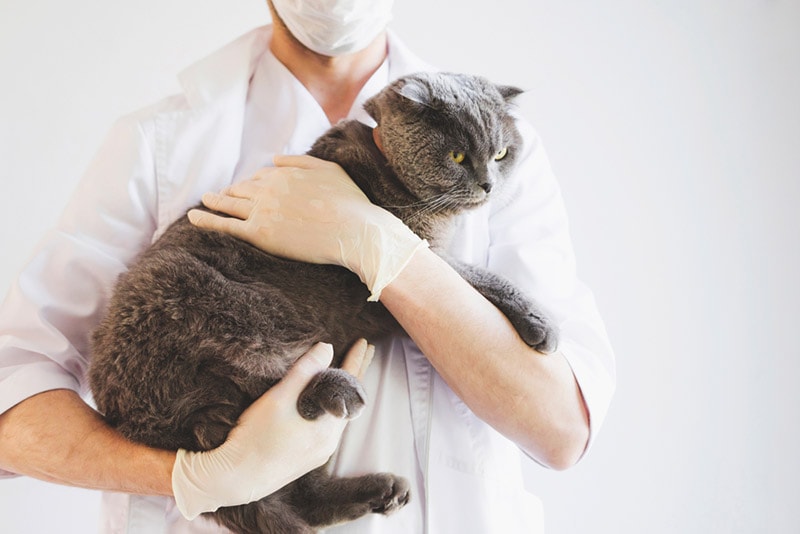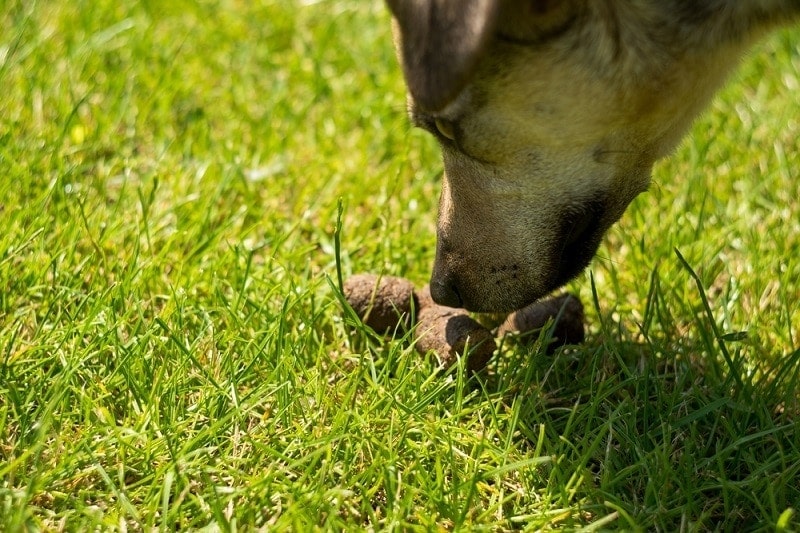Paraphimosis In Dogs: Causes, Signs & Treatments (Vet Answer)

Updated on

Click to Skip Ahead
If you have a male dog, you may not be aware that there are potential health conditions that can involve their reproductive system, and one of these potential conditions is called paraphimosis. This is where a dog’s penis is unable to retract fully back in the prepuce or sheath.
In this article, we’ll learn a little about the causes, signs, and treatments so you can be aware of them should they ever affect your dog’s health.
What Is Paraphimosis?
A little background information on canine male reproductive anatomy may prove to be helpful. At rest, a dog’s penis is housed inside their prepuce (also called the sheath). The prepuce or sheath is the skin and surrounding tissues that are around the non-erect penis that is typically visible on a male dog most of the time. But, when they experience an erection, a dog will have the penis come out of the prepuce through an opening called the preputial orifice. When a dog’s penis is stuck outside of the sheath for over a couple of hours, this is considered paraphimosis.
As mentioned, paraphimosis is when the penis is stuck and unable to fully retract back into the prepuce. This most commonly happens after an erection has occurred but can also happen after semen collection or copulation. It most frequently is seen in younger male dogs but could occur at any age.
Often, the skin at the edge of the prepuce will invert which keeps the penis trapped out as it is erect. With the penis being stuck and exposed over time, it becomes swollen with fluid as the blood drainage is impaired. Furthermore, the exterior surface starts to dry out and can become painful. Self-trauma, often seen with recurrent licking, makes the situation worse.
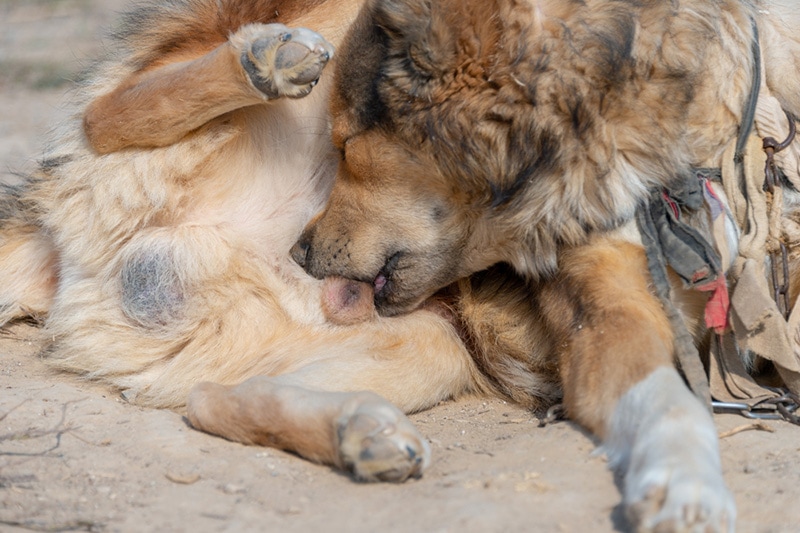
What Are the Signs of Paraphimosis?
Often, the first sign observed is that the exteriorized penis that is visibly stuck will not go back into the prepuce. A dog may readily lick the area and may show signs of pain and discomfort that increase over time. As a result, there is often the drying of the penis and the color may start to turn a bluish-purple. Eventually, if not resolved, there will be a death (necrosis) of the part of the penis that is exposed. There can also be loss of blood to the penis as well as swelling and fluid accumulation.
In addition, the male dog may have urinary changes such as straining to urinate, blood in the urine, or being unable to urinate altogether.
What Are the Causes of Paraphimosis?
There are several potential causes of paraphimosis. These could include:
- Genetics
- Anatomical abnormalities
- Deformity of the penis
- Too small of an opening of the prepuce
- Inflammation and swelling of the penis or prepuce
- Some foreign object or obstruction around or restricting the penis such as preputial hair, a rubber band, string, etc.
- Trauma
- Tumor
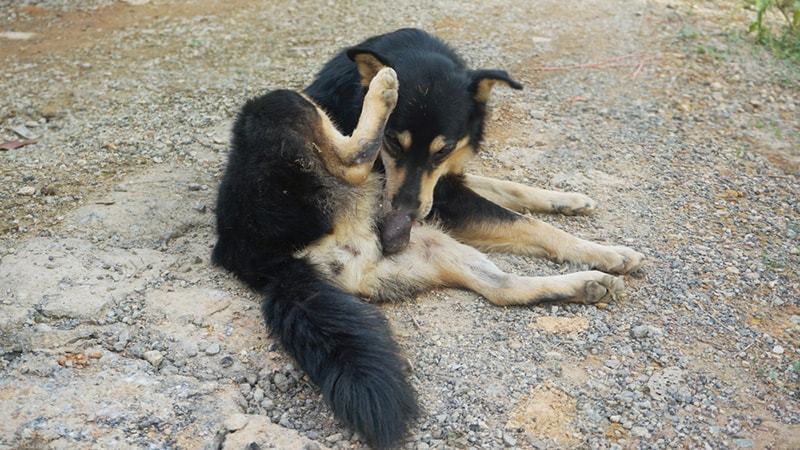
How Do I Care for a Dog with Paraphimosis?
With paraphimosis, the goal is to restore the penis to its normal position inside the prepuce. If your dog exhibits this medical problem, you could make a gentle attempt at lubrication of the dog’s penis and then gingerly try to guide it back into the prepuce. If this does not resolve the problem, it’s time to seek prompt veterinary care as the more time that passes can result in further medical problems. The good news is that if a dog is treated quickly, it is generally easier to treat. As time passes, and especially after 24 hours, there may be so much damage that more extreme care (including penile amputation) may be needed.
At a veterinary hospital, a history and physical exam to recognize the suspected cause will be conducted. Typically, an affected dog will need to be sedated or anesthetized for further treatment. To begin, the penis will need to be cleaned, lubricated, and placed back into the prepuce. Some various options the veterinarian may attempt to resolve the situation include:
- Removing any hair or foreign objects that may be around the prepuce may keep the penis from being able to retract back.
- Soaking the affected area in a sugar (dextrose) solution to bring down swelling.
- A cold compress with careful pressure, similar to how a pressure bandage would be.
- Gently retracting and manipulating the penis further to allow the prepuce to unfold.
If the penis is still unable to be returned into the preputial orifice, further measures may need to be taken.
- The preputial orifice may need to be permanently enlarged to allow the penis to fit back in.
- A temporary suture may be used to hold the penis in place.
- For dogs with recurrent paraphimosis, a surgical procedure called a phallopexy may provide successful treatment.
- Unfortunately, if there is severe necrosis of the tissue, amputation may be needed.

Frequently Asked Questions (FAQs)
1. What is an affected dog’s prognosis?
A dog’s prognosis to live a normal life is good if they have early medical intervention and treatment that resolves the issue. If your dog does experience this condition, it may be helpful to know that going forward, it can be common for it to happen again. If there is a long delay in resolving the issue, there is a more guarded prognosis as severe necrosis may need amputation. As genetics can come into play in some cases, a breeding dog’s prognosis with this medical issue is poor and they should not be bred anymore.
2. Will having my dog neutered resolve the issue?
While there are other definitive benefits to having your male dog neutered, this is not one of them. Unfortunately, having a dog neutered would not be considered a resolution of the health issue as paraphimosis is not a disease that is dependent on testosterone.
3. What at-home tips are recommended?
Paraphimosis due to a dog’s genetics or abnormal anatomy cannot be prevented, but some things you can do to try to help prevent an issue could be, if possible, preventing a dog from humping or having an erection altogether. Secondly, keeping the hair neatly trimmed at and around the preputial orifice (opening of the prepuce) may help to prevent those situations where hair gets caught or has a constricting effect on the penis.
If your dog will let you attempt safely, as mentioned above, gentle lubrication and a light attempt to replace the penis into the prepuce, then you may be able to resolve this issue at home. However, if this does not resolve the issue, further veterinary care would be the next step.

Conclusion
Male dogs can have paraphimosis, which is where the erect penis cannot be fully retracted back into the prepuce. When this occurs, it is an emergency if it does not resolve fairly quickly on its own. Being aware of the signs, causes, and potential treatments can help you recognize the problem and know to act quickly if your dog should suffer from this situation.
See also:
- My Dog Swallowed a Golf Ball: Here’s What to Do! Vet Answers
- Heartworms in Dogs: Signs, Causes & Treatments (Vet Answer)
Featured Image Credit: MDV Edwards, Shutterstock



